Fall 2017 Undergraduate Juried Exhibition Award Winners
The Penny W. Stamps School of Art & Design celebrated the Fall 2017 Undergraduate Juried Exhibition, featuring the exceptional works of our undergraduate students in art and design, on Friday, November 10, 2017 with a reception in the new downtown Stamps Gallery.
The jurors for the exhibition – Anne-Marie Kim (BFA 2004), owner of Genui Forma and Creative Director for Continental; Samara Pearlstein (BFA 2008), Gallery Director for the Art Department at Wellesley College; and Ron Watters (BFA 2001),owner and founder of One Custom City and SCIDE Design – selected 79 of the 272 works submitted for inclusion in the exhibition. Of those 79, the jurors recognized 15 works with awards. We asked the award-winning students to talk about the work that was selected and to let us know what they're currently working on.
Paul Kubicek (BA in Art & Design, Minor in Entrepreneurship and Art History ‘19), Yiyi Gao (BFA ‘19), Daniel Caldwell (BFA ‘19): Wood and Metal Bridge
Arden Fate Memorial Award
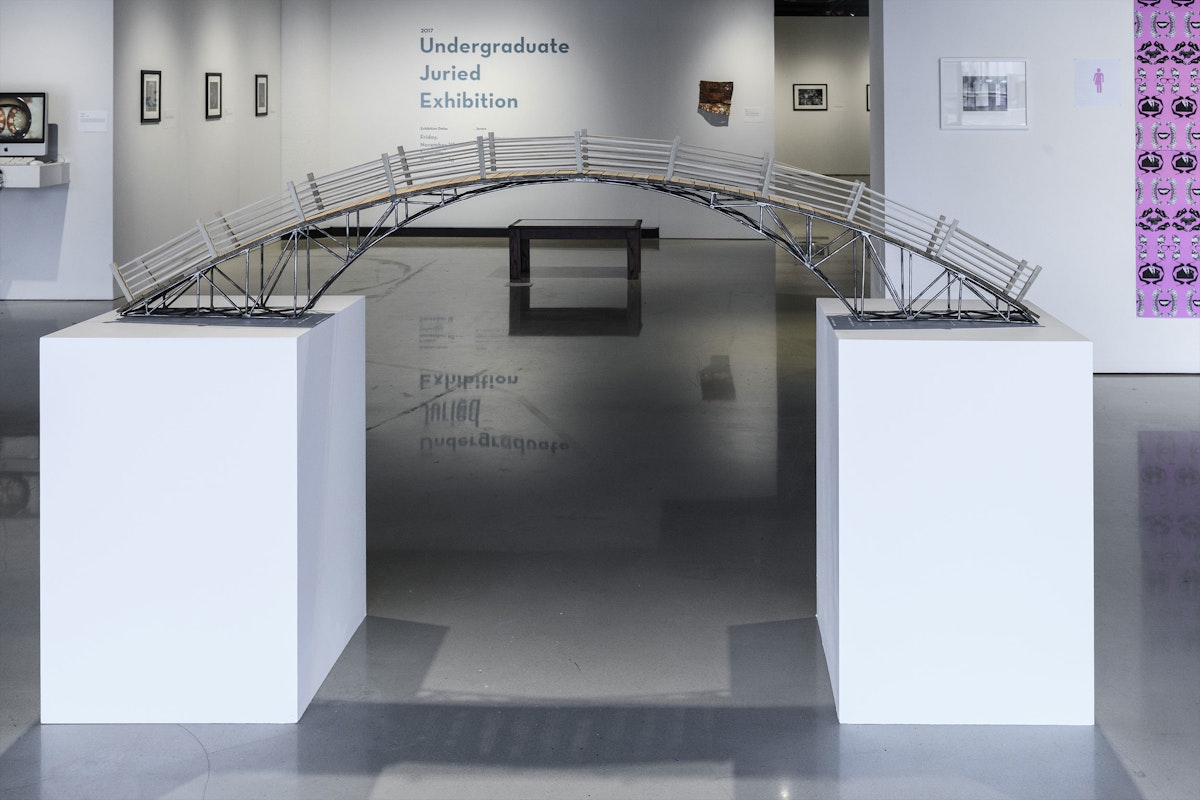
Our bridge is a concept designed to replace a bridge in Gallup Park. The original bridge was a beam bridge across the river, and we wanted to replace it with an arch bridge so that canoes and kayaks could pass under it. We measured the dimensions on site and designed our bridge by studying the structure of the Da Vinci Bridge in Norway. We used carbon steel metal for the truss system and used cedar for the planks and railings for the bridge.
Caldwell is currently working on a large project for Sci-Fi Prototyping using an AR Cave to display the interior of a potential concept car and what it might be like to spend time within that setting. The furniture that one may sit on in the simulation will be digitally fabricated to allow for greater interactivity.
Gao is currently working in teams to explore ear, nose and throat (ENT) related practice challenges for her Interaction Design class. She is developing a tool for urgent care and primary care doctors to better navigate information and more efficiently communicate with ENT specialists and patients, helping them to reduce chances of misdiagnosis.
Kubicek is currently working on a few larger projects. One project is an entrepreneurial venture he has undertaken with two Mechanical engineering students. They are creating a consumer product that combines a thermos flask and an electric kettle to make hot beverages on-the-go. This product won the 2017 National Instruments Accelerating Innovation award, the 2017 open design competition of the University of Michigan Makeathon, and the University of Michigan Dare to Dream Grant to pursue this venture. In another project for a sci-fi prototyping course Kubicek is taking this semester, he is designing a smart pill bottle to prevent the incorrect distribution of prescription medication from nursing home or hospital staff to patients. He is exploring how AR/VR can be exploited to prevent human-error in this process.
Natalia Cuevas (BFA, Minor in Latino Studies, ‘19): Dale, Dale, Dale
Opportunity Award
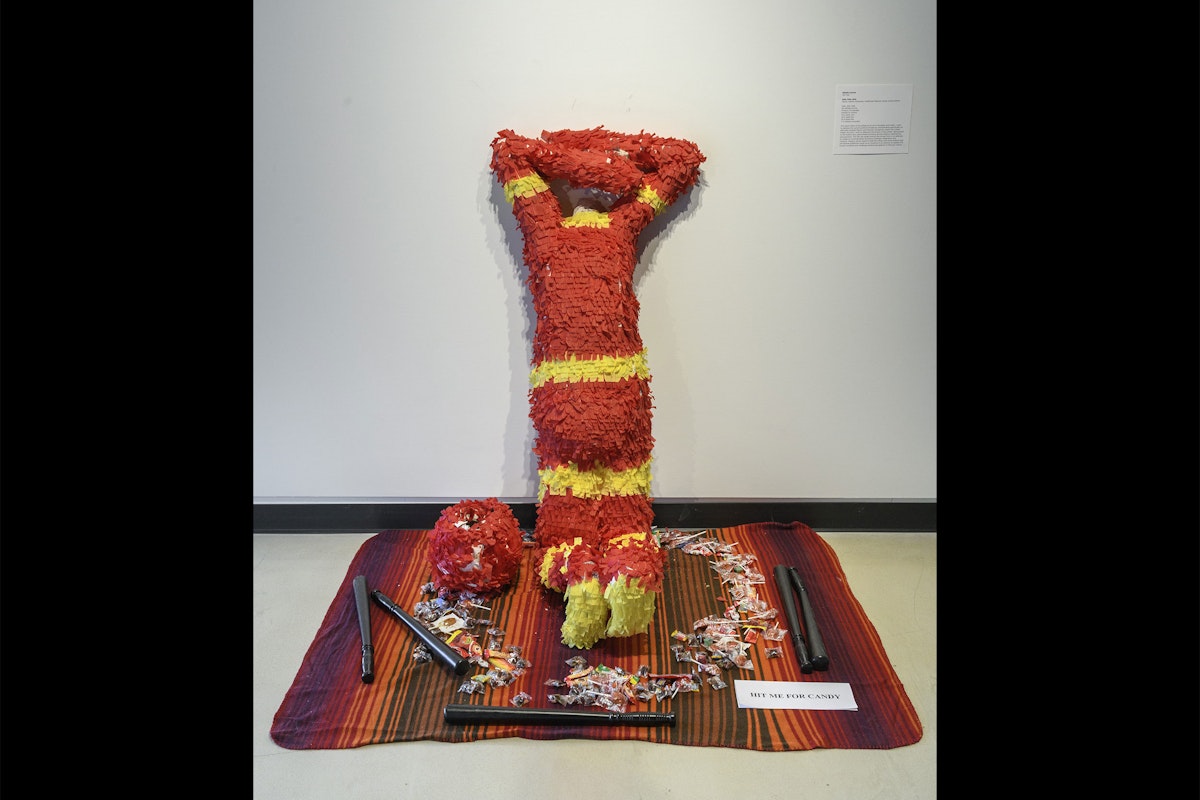
This interactive installation refers to the piñata as an act of brutality and wrath. I created this piece in direct response to the current political climate, concentrating specifically on anti-immigrant sentiment and the overwhelming sense of animosity towards Mexican immigrants today. I was interested in exploring the history of the piñata and its religious connotations, dating back to the Aztec ceremonies and practices. The pinata mimics the human form in an attempt to create an uncomfortable dichotomy between celebration and violence. The piece is places responsibility on the viewer in an attempt to question the human condition and challenge existing perceptions and stereotypes of Mexican culture. It is meant to spark a dialogue between communities and encourage multi-cultural awareness and education within a racially-divided society.
I am continuing to explore repeated patterns of injustices against the Latinx community and am interested in educating the public on a community that has been continuously discriminated against throughout history by challenging existing stereotypes and misconceptions through photography and interactive installations. I am currently using documentary photography as a means to share stories and narratives of communities that are often misrepresented within American society. I am working with migrant communities and undocumented workers in an effort to challenge stereotypes and encourage a deeper understanding of those constantly rendered invisible. I plan on continuing to work with documentary photography, as well as studio photography, in an effort to make the invisible visible.
Sara Eskandari (BA, Minor in Computer Science ‘19): The Vitula Quartet
Irene Bychinsky Bendler Award in Design
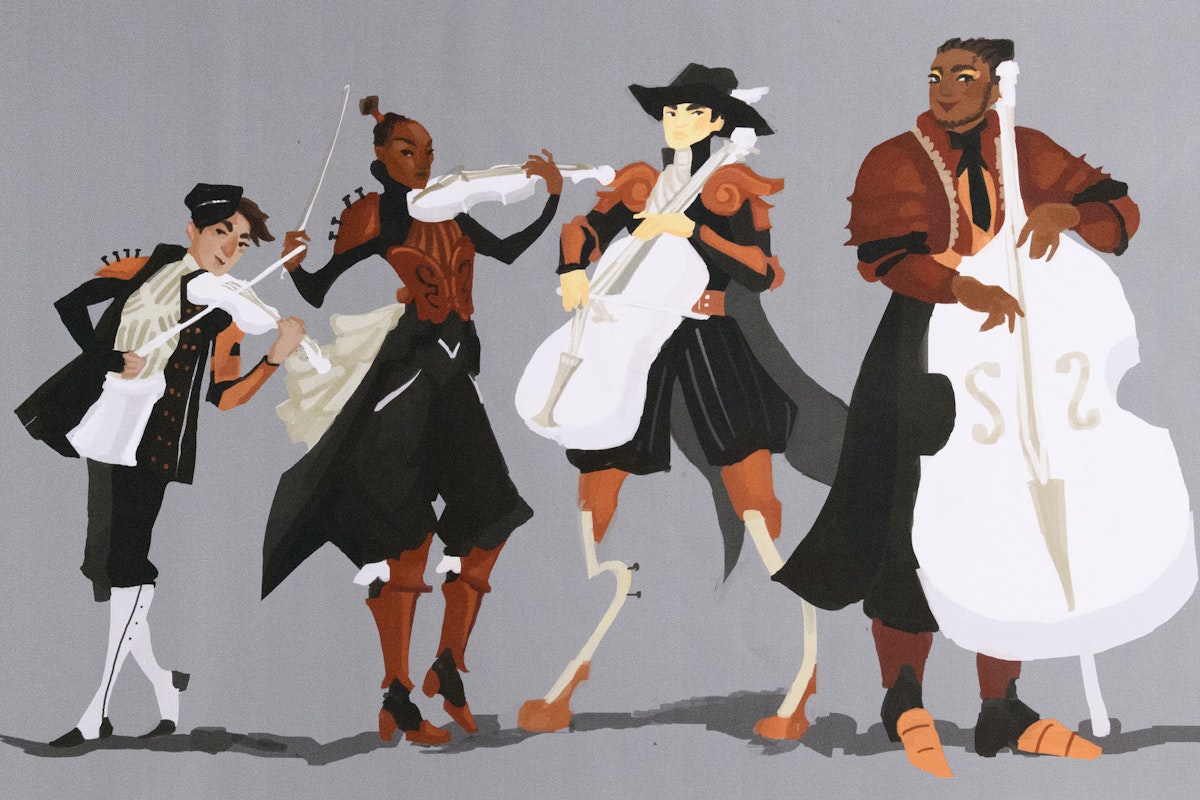
The Vitula Quartet is a study of representation, mechanics, and visual development in character design for video games. I believe video games are one of the most powerful storytelling mediums, as the audience is actively involved in its storytelling. In the world building process, I can isolate aspects of our society that we accept as truths, and critique them in a new context — a new world. This allows me to provide an immersive and politically safe environment to all players, so that I may intimately challenge the player’s beliefs without challenging their character. The Vitula Quartet is an exploration on the idea, “What if we fought with music, rather than words and violence. What if in arguing we aimed to empathize, and reach a harmony — a compromise of two ideas?” From this thought I developed these characters organically from the viol instrument family and other historical, pop culture, and literary references, and brainstormed gameplay mechanics suitable to the unit. The Vitula Quartet was digitally sketched on the Procreate App for IPad Pro and rendered and compiled on Adobe Photoshop.
As a BA, I am not currently taking any studios to advance my work in video game design, rather, I spend my time as VP of the video game development club, WolverineSoft, creating prototypes in Game Jams and working as a contractor at the virtual/augmented reality company, Gwydion Inc. My most recent video game, Feed Fighters, was born from the October Game Jam with a team of three others, and was a critique on the toxic social media argumentation. With gameplay inspired by Super Smash Bros, each player battles for their Self-Worth as tiny, aggravated anonymous icons on their phone. To expand on my video game development skills, I am drafting an independent study on 3D modeling and animation for next semester.
Charlotte Feldman (BA ‘19 with a certificate in Marketing from the Ross School of Business): Twisted
John H. McCluney Memorial Award
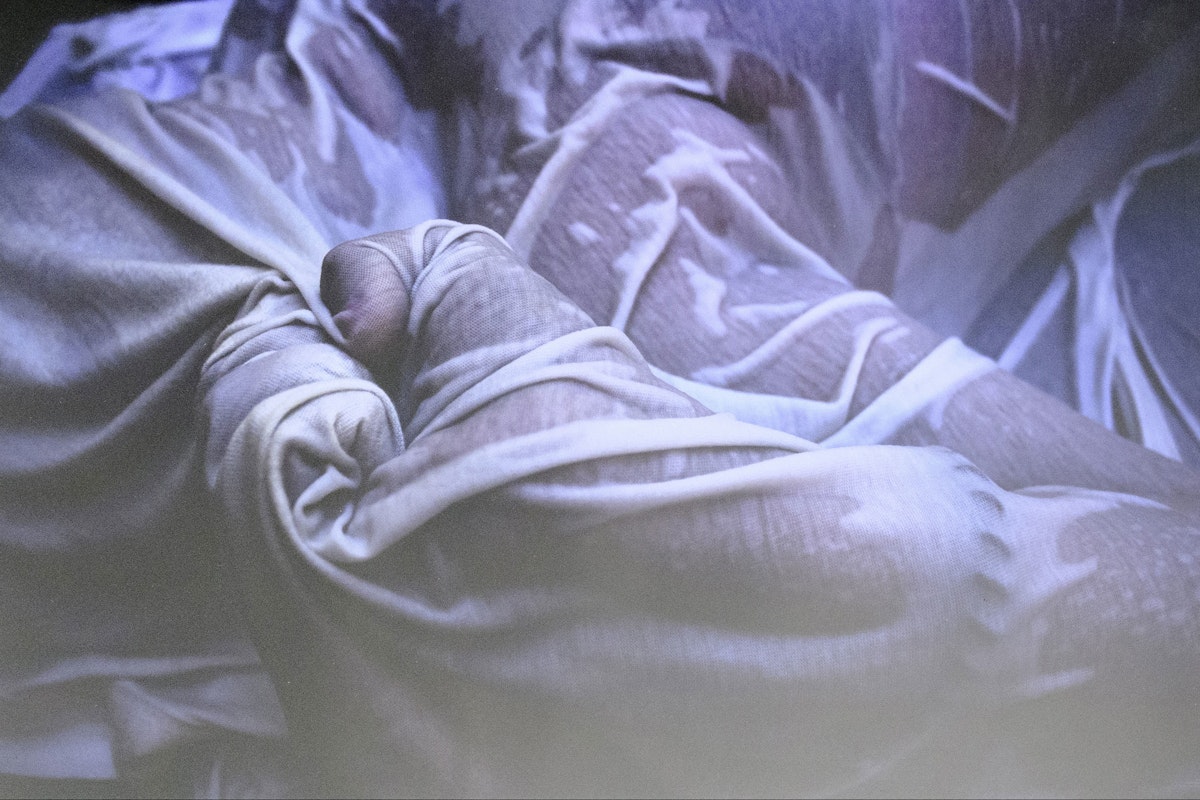
Nightmares and I have always had an intimate relationship. As a child I found myself pulling my blankets over my head because I thought that they would keep the nightmares out and protect me. Growing older I quickly realized that they were unable to protect me from all of the terrors around me and are in fact quite suffocating. This piece is my attempt to capture this no longer naive feeling.
I am currently a freelance graphic designer in the Ann Arbor area and looking forward to studying abroad in Singapore in the upcoming Winter semester.
Jordyn Fishman (BFA and Minor in Urban Studies, ‘19): Love Dunks! (Pt. 2)
Robert D. Richards Memorial Award

This world is driven by money and power. It is the unequal distribution of these factors that foster unequal opportunity and prevent our communities from finding unity. This work is a personal expression of moving past the money and the power to focus on something much more impactful, love. We must love this world, love one another, and love ourselves because… love dunks!
I am continuing to paint and work with the concept of “love dunks!” Going forward, I hope to be able to engage communities in initiating change and mobilizing this love.
Grace Guevara (BFA ‘18): Fold and sew
Guy Palazzola Memorial Award
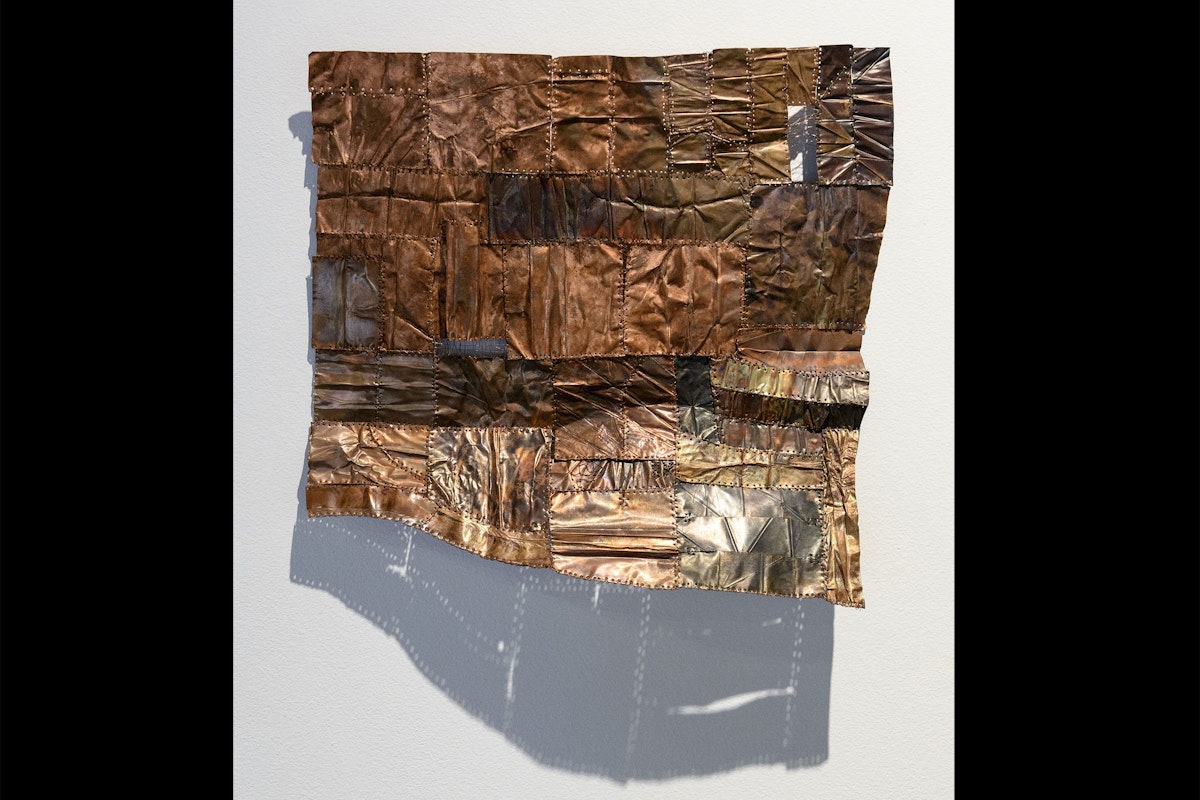
Cameron Hunt (BA’ 19): Jets Over the Louvre, 2017 Tour de France
Alice Elizabeth Kalom Award
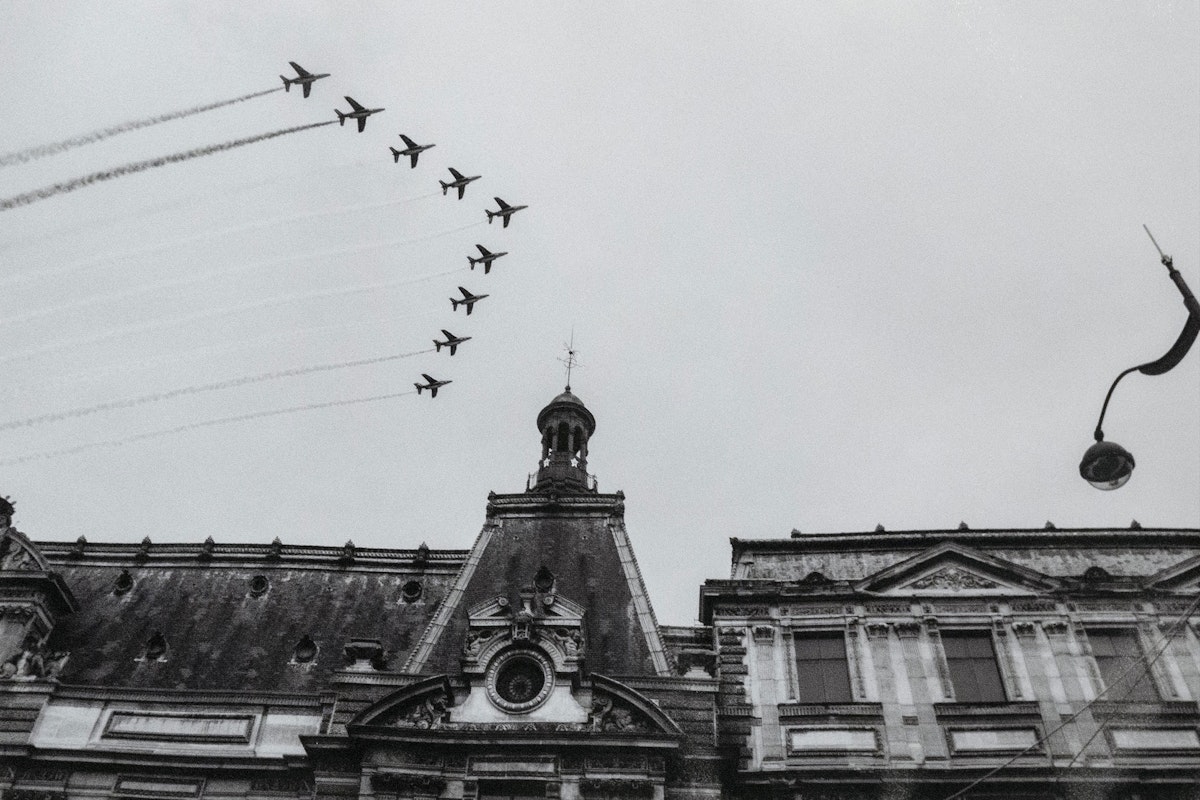
Camille Johnson (BFA Interarts ‘19): The Creative Body
Guy Palazzola Memorial Award

The Creative Body combines puppetry, projection, sound and spoken word to ask the question what makes up the creative body? A 9-foot papier-mâché puppet face hangs, serving as a screen for projections. A sound piece accompanies the projections using both spoken word and a soundscape sourced from a car wash.
Camille Johnson is a interdisciplinary performance artist who is currently focused in sound and image manipulation, video, and puppetry. Growing up in Vermont and spending her early adulthood in New York City, Johnson has been strongly influenced by Bread and Puppet Theater and the modern approaches to avant garde puppetry. She is currently a student at University of Michigan pursuing a BFA in Interarts Performance, graduating in 2020. She is currently working on two performances in the Interarts Showcase, using live feed projections, delayed at varying intervals and a cranky puppet theater.
Rachel Krasnick (BFA, Minor in Business, ‘18): Lazy Susan
Robert D. Richards Memorial Award
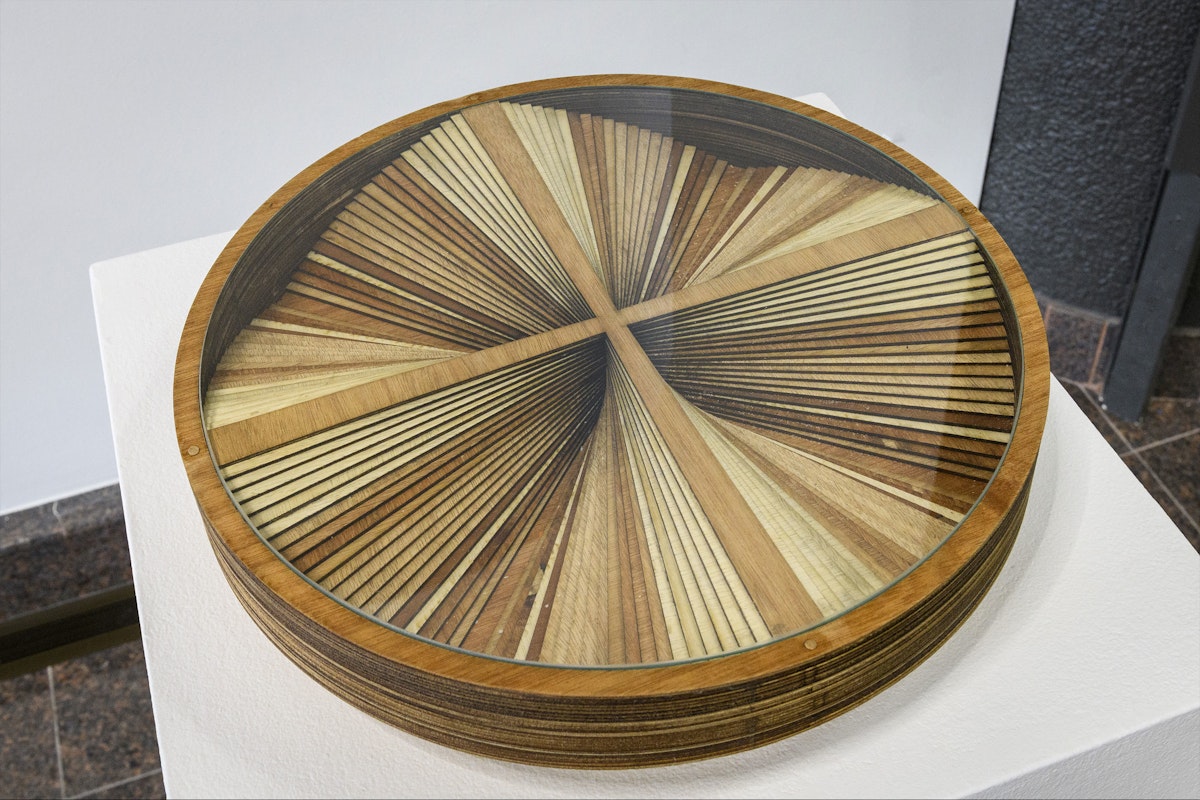
With this piece I was inspired by artists creating 3D forms created out of flat pieces. My goal was to explore this technique using digital fabrication methods. I created the final form of the lazy susan out of stacked laser-cut plywood pieces. The design of the stacked slices allows for multiple functions.
I am currently working on my senior integrative project! I am exploring adolescent’s habits with taking daily medication and developing a product design to help improve this experience.
Ellie Levy (BFA ‘21): Wabi Sabi Hanging Platter
Opportunity Award
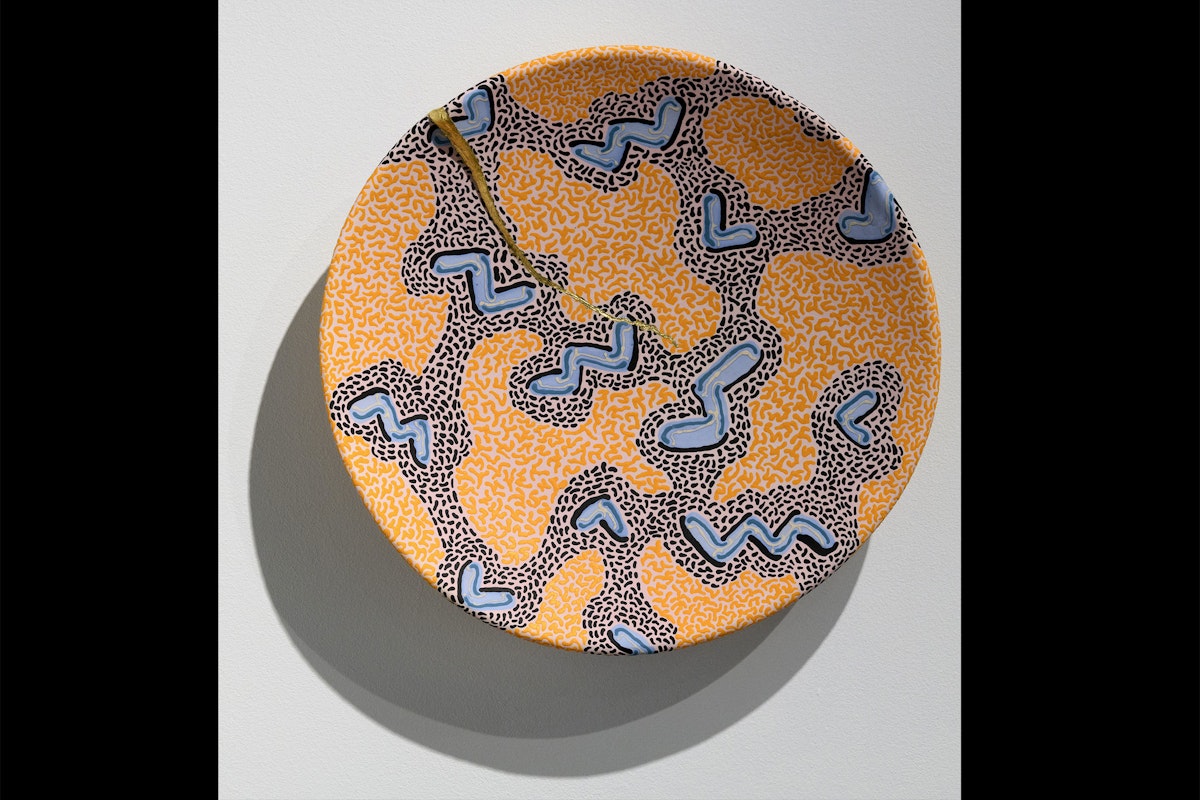
In my piece, Wabi Sabi Hanging Platter, I explored the relationship between surface design and form. The juxtaposition found between intricate, almost overwhelming patterns and the simple silhouettes to which they are applied is very interesting to me. I experiment with layering 2-dimensional patterns with 3-dimensional qualities over simple forms. I apply 70s-inspired, soft geometric motifs over a foundation layer of intricate and condensed patterns and a colored base pigment. The defining feature of ceramic ware is its functionality, and it is a misconception that it only becomes art when it appears to be superficially aesthetically pleasing. Therefore, I attempt to add the quality of a third dimension in my designs to separate form from surface. When you place a functional object on a pedestal in a gallery, ironically you strip it of its original function; it then functions as solely as an aesthetic addition to the space it inhabits. The irony in this piece is that when it cracked in the firing process, it lost its functionality I intended for it to possess, and I could either have disposed of it or embraced it as solely decorative. I filled in the crack that defines the piece with resin and applied gold leaf to transform the imperfection into the focal point. I exaggerated the lack of functionality by preserving its unglazed surface and changing it from a sitting platter to a hanging platter. I constructed this piece by hand and used B-mix clay, underglaze pigments, resin, and gold leaf.
I am currently planning my upcoming series, which will be a branch off of my exploration of layering 2D patterns with 3D qualities. I plan to incorporate a human quality into variations of the designs. The designs on the surface of the forms will be more inconsistent and organic, distorting and warping as they wrap around and consume the form on which they rest. Elements of distortion and abnormalities in the context of the human condition deeply interest me. The imperfections of people are often their most endearing and thought-provoking qualities, and upon embracing the imperfection that is now the focal point of the hanging platter in the exhibition, I realized I wanted to project and embrace abnormalities in the context of creating ceramic art in a more deliberate sense, in contrast to the piece from the exhibition in which possessed imperfections that were originally unintended.
Maya Neideck (BFA ‘21): Courage
Irene Bychinsky Bendler Award in Design
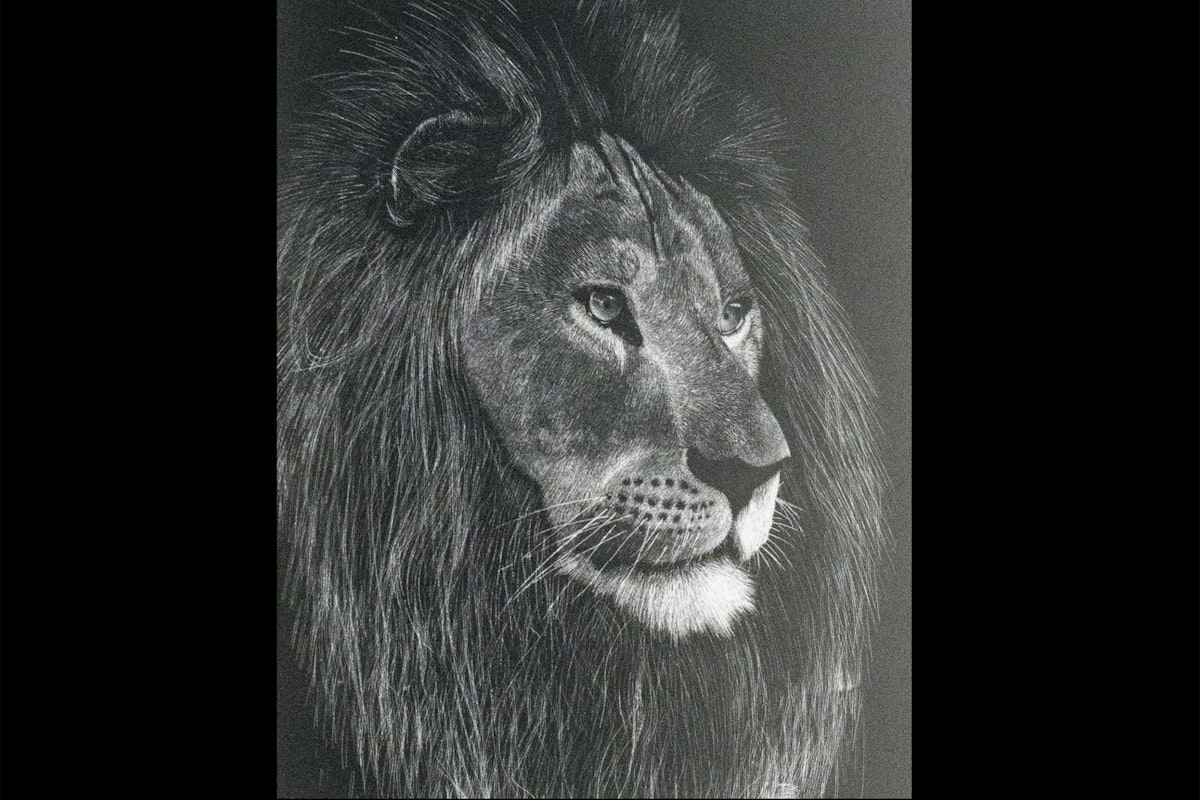
My winning piece was created using scratchboard, which is basically a material covered in black ink or other product that is left to dry and then can be scratched away using a knife or a special tool. For my piece, I got a pack of premade scratchboard and used an Exacto knife to scratch away at the board. When working with scratchboard, it’s the opposite of working with regular graphite. Instead of drawing in the shadows you have to draw in the highlights. I enjoy that it forces you to change your perspective.
I am currently working on a few projects in my classes, but nothing very big at the moment. In the future I hope to do more scratchboard projects, and possibly some hyper-realistic portraits.
Katie Raymond (BFA ‘18): Fierra Roper
Opportunity Award
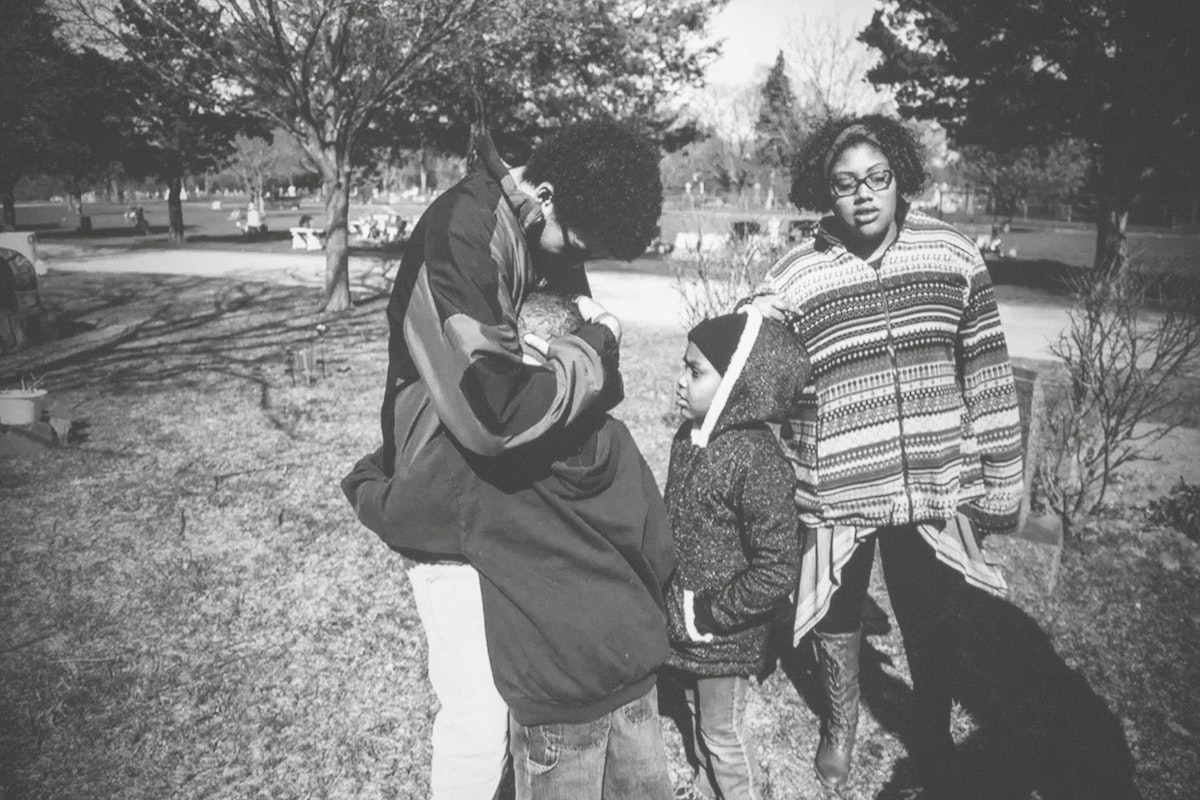
I spent three weeks with Fierra Roper, a woman who I met while she was working at Salvation Army. I was exploring the idea of documenting someone who shares my same community but experiences a much different day-to-day life.
I am currently working on my IP senior thesis that is surrounding the theme of life changing events. I using photography and audio interviews to document people who have experienced a life changing event. Photography gives us an opportunity to get to know each other and expand our capability to engage with people in a meaningful way and I am hoping to create a 3 way dialogue between the me — the photographer, the subject and the viewer. I believe that photographs are evidence of reality, of life being lived. But photographs can be curated and consequently have the power to deceive. By combining audio with the visual, I will be giving a voice to the image, to humanity.
Cole Stabnick (BA ‘18 Minoring in Entrepreneurship): Hart of the City
Opportunity Award

For my sweatshirt collection, Hart of the City, I wanted to expand on the accessibility of art, and protest art. By looking through the lens of socially conscious hip-hop, I constructed 5 different sweatshirts illustrating different concepts portrayed in the artist's music adding my own unique perspective. Each sweatshirt started as a blank white hoodie and from there, I hand dyed the sweatshirts while adding different fabrics, heat press vinyl and ink.
I am currently starting a second clothing brand called Cost. The brand is focused on urban fashion and features one-off designs. Everyday we will be releasing an article of clothing for sale on Instagram that is hand dyed, and completely exclusive. No design will be the same. I will be creating clothes that embraces people's individual sense of style. Fashion that celebrates uniqueness.
Title and Cole Stabnick images: Stephanie V. Brown; all other images: Doug Coombe.